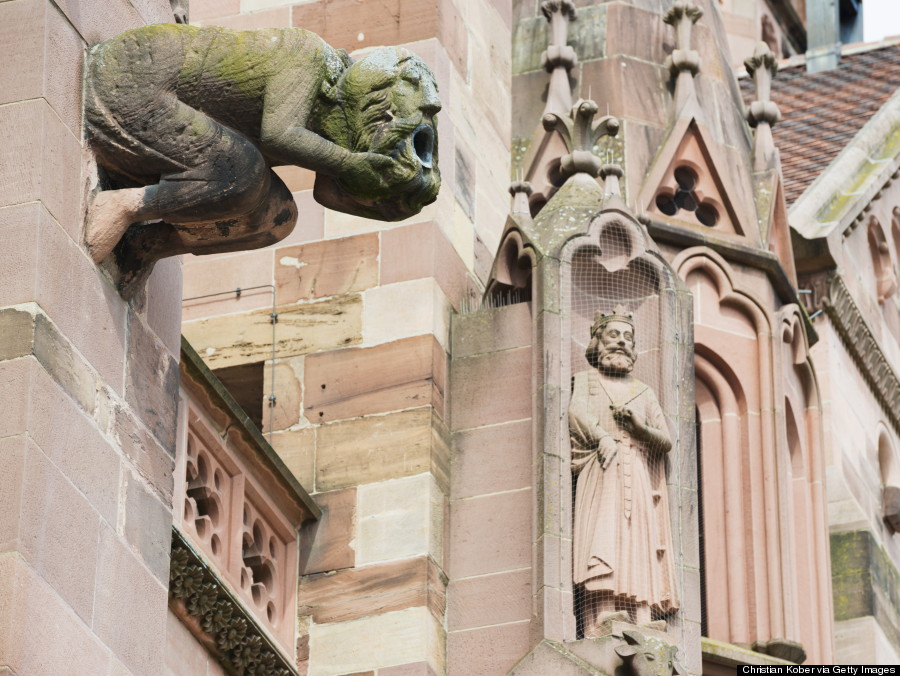

Archaeologists are unsure as to why the gargoyles fell. Angelic benevolence has rarely appeared so interesting, and the book may make even devout young nonbelievers clamor for a church visit. The marble gargoyles have occupied the top of the old church for over 150 years. The nocturnal scenes are rich in teals and purples with subtle geometric patterns, which contrast with the jewel-like glow of the church’s stained-glass windows, a repeated motif. The mixed-media paintings strongly echo Chagall, especially in the fluid yet slightly folksy figures of the angels.

The story of rejection hits at kid understanding, and the angels’ nocturnal benison, though somewhat sustained, is genuinely poignant (“god bless each soul that is tortured and taunted,/god bless all creatures alone and unwanted”). At the start of this endeavor, gargoyles were not a staple of French architecture. The sadness of the derided gargoyles attracts sympathetic angels, who console the gargoyles and take them on a night flight, a practice that still continues to this day: “so if you see shapes in the night sky, don’t fear/-for it simply means angels and gargoyles are near.” Aside from the occasional stumble, the galloping anapests are lilting and suitably old-fashioned, making for sonorous reading aloud. Under Bishop Maurice de Sully, Notre-Dames construction started in the 1160s and lasted nearly 200 years. PDF Download Ad vertisement by OnlyOneMoreStitch OnlyOneMoreStitch. This rhyming story spins a yarn about the history of carved church gargoyles, who start out as protectors to keep evil away but then begin to elicit the suspicion of the very people they were intended to guard. Michèle Feltrin, numbered signed etching, medieval sculptures, church gargoyles, intaglio engraving on copper plate, Ad vertisement by ElementsDeco ElementsDeco.


 0 kommentar(er)
0 kommentar(er)
